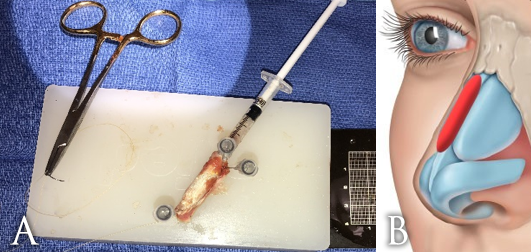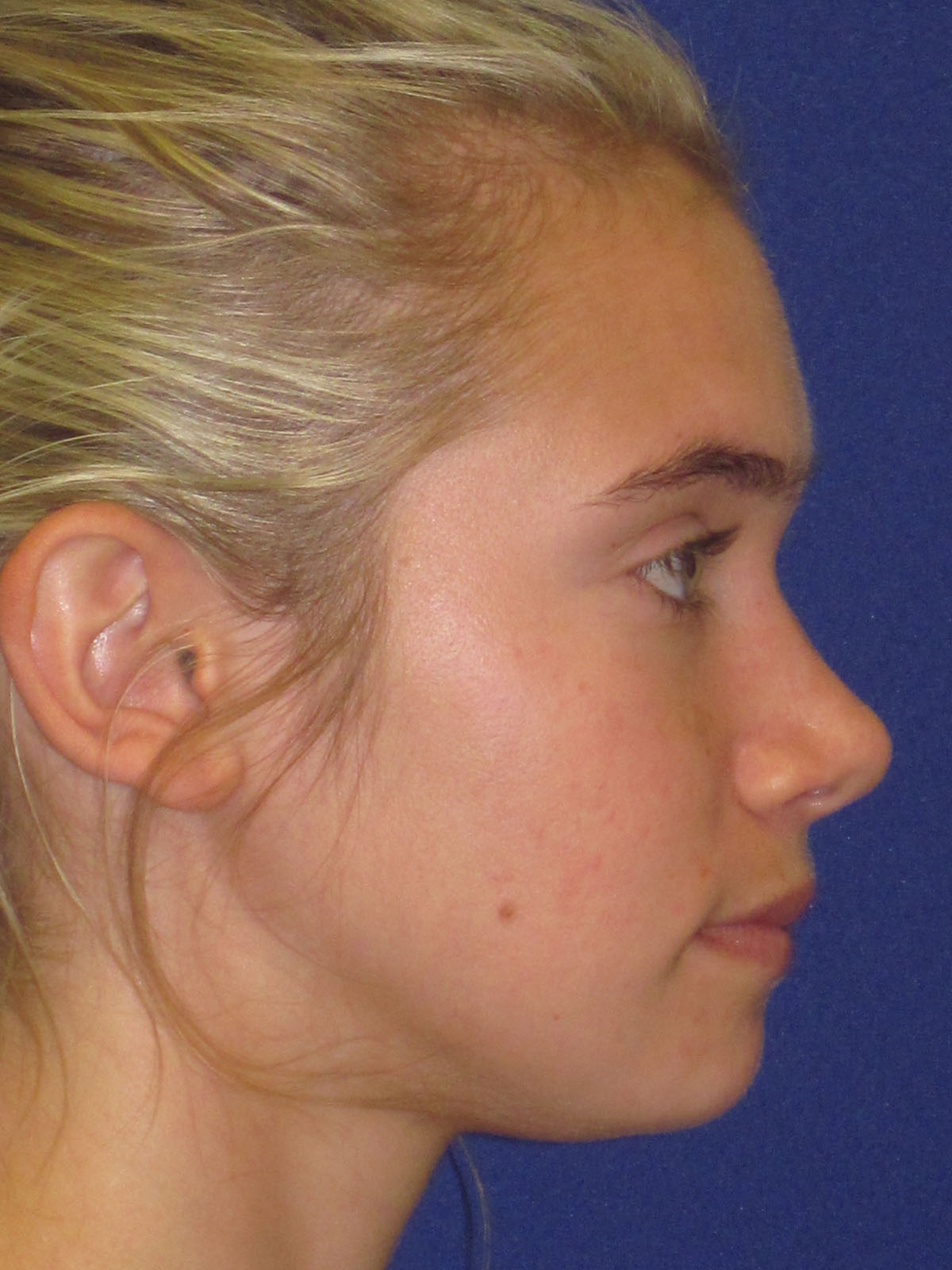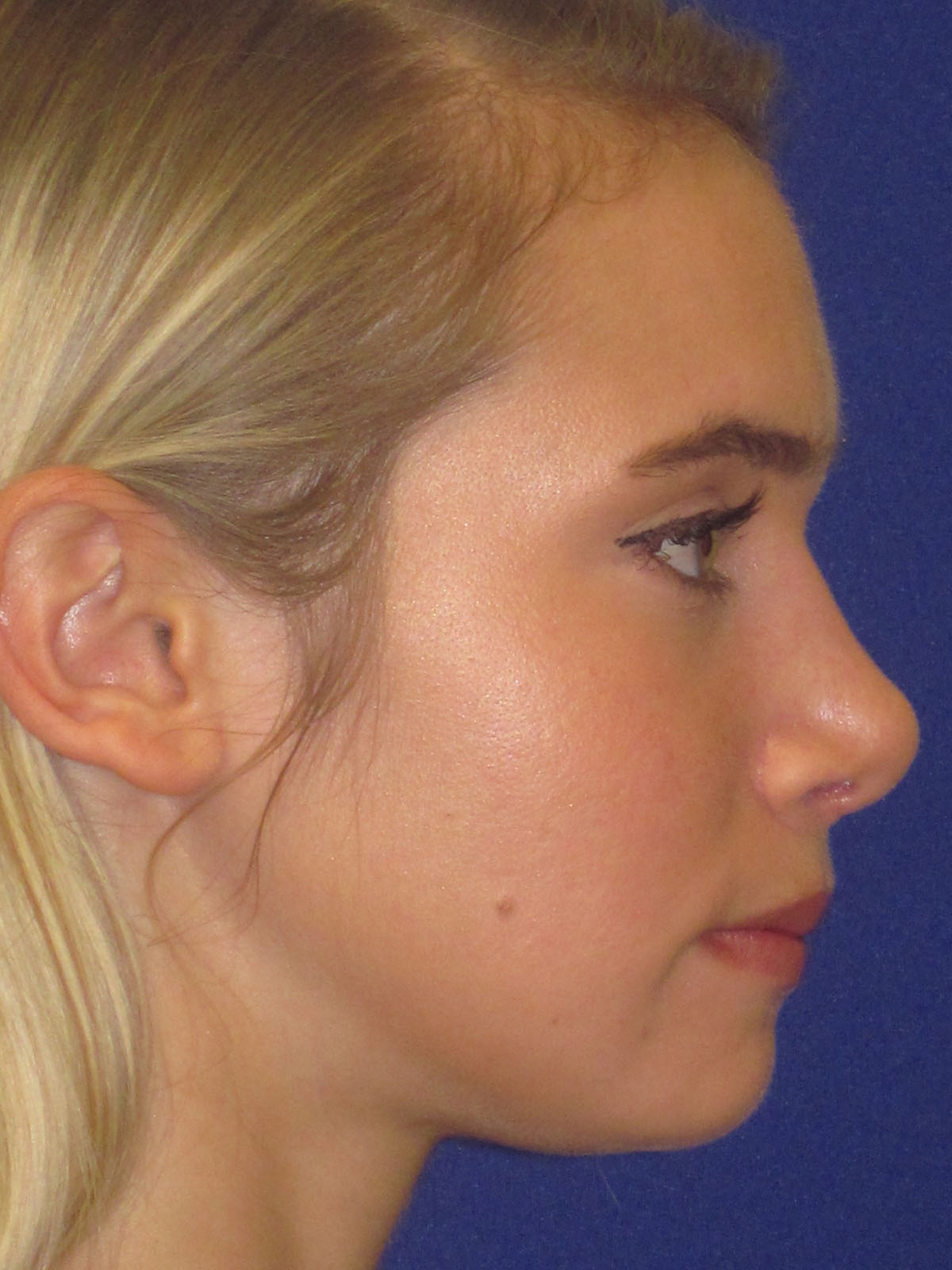



CAN AN OVERLY “SCOOPED OUT” BRIDGE FROM PRIOR SURGERY OR SADDLE NOSE DEFORMITY BE FIXED?
Yes. Many patients come to my office with complaints of a “ski slope” appearance to the bridge of their nose after prior rhinoplasty surgery. This complication is usually caused by over reduction of a nasal hump. The nasal bridge should have a smooth appearance in a male, and a gently concave natural appearance in a female. The bridge should not be overly sloped, a dead giveaway for prior rhinoplasty surgery, and an aesthetically unappealing look.

The diced cartilage fascia graft (DCF) being constructed. The syringe is being used to injected finely diced cartilage into the fascia sheath. B. The diagram shows the positioning of the DCF (in red) on the nasal dorsum.


Saddle nose rhinoplasty results
The results of rhinoplasty should be natural, and patient results should not “scream out” that they had a surgery. Subtle and natural results are the best results when it comes to rhinoplasty. This problem is commonly fixed by rebuilding the nasal bridge, and thereby increasing its height to a more natural level. This is commonly done with grafts. The most popular graft that I use in my practice is made up of diced cartilage and fascia (DCF). The graft is made up of finely diced cartilage wrapped in deep temporalis fascia.
This graft is very versatile and can be used to fix a variety of complications. It can also be molded in the immediate postoperative period, allowing small modifications to be made. For larger defects, rib cartilage is harvested and used to provide added bulk and support. It is commonly covered with a DCF to hide the sharp edges of the rib graft, allowing a smoother appearance for the nasal dorsum.


This patient underwent correction of an overly concave “scooped out” dorsum with DCF graft. Notice the increased height and straighter appearance of the dorsum after surgery.

